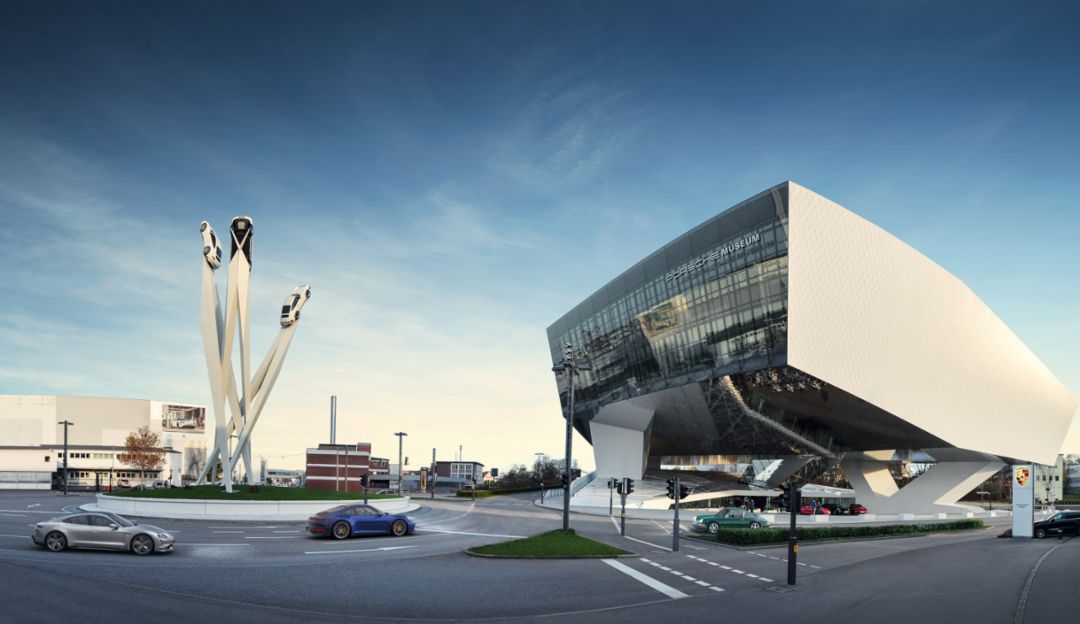Porsche Museum Stuttgart Overview & Guide
The new 100 million euro Porsche museum was built a 1 minute walking distance away from the old tiny museum that was located on the factory plot. The new museum project was announced in 2004 and the museum was opened on January 31, 2009. It has space for 80 cars and 200 additional exhibits in a 5600 m2 / 60,300 square feet exhibition area. The museum has actually more than 500 cars and they are rotated from storage to museum and to events around the globe. So, you should visit the museum frequently to see all the treasures they have. The museum’s underground garage has 260 parking spaces for visitors.
Chronology of the New Porsche Museum
- 2004 July 30: The Board of Management of Porsche AG announces the decision to build the new Porsche Museum
- 2004 October: The final competition for the new Museum is held among ten renowned architects’ offices from Germany, Austria and Switzerland. In all, 170 European architects’ offices had applied for the project.
- 2005 January 31: The jury awards the first prize to the Viennese architects’ office Delugan Meissel
- 2008 October: The displays and small exhibits are positioned on the Exhibition Level
- 2008 November 3: The first twelve exhibition cars are moved to the second upper level of the new Museum. Painting the ceiling and walls goes with the cars under covers, but already fitted on their places for the lighting specialists to be able to set the correct lighting for the cars
- 2008 November 5: The Porsche brand name highlighting the Porsche Museum is fitted in position on the glass facade
- 2009 January 31: The Museum is opened for visitors
- 2015 August 31: “Inspiration 911”, a sculpture by Gerry Judah, launched on Porscheplatz.
The Porsche Museum Is Massive
The Porsche Archives located at the new museum, extend along a total distance of over 2 km / 1.3 miles spread out on shelves, displays, steel cabinets and vaults. As one of the largest picture archives in the automotive industry, the Porsche Archives comprise more than 3000 car books, over 1500 hours of footage and more than 2.5 million photos. And counting! A further highlight is the comprehensive collection of written documents on the history of Porsche products, racing activities and the Company as such.
No Subscription? You’re missing out
Get immediate ad-free access to all our premium content.
Get Started



